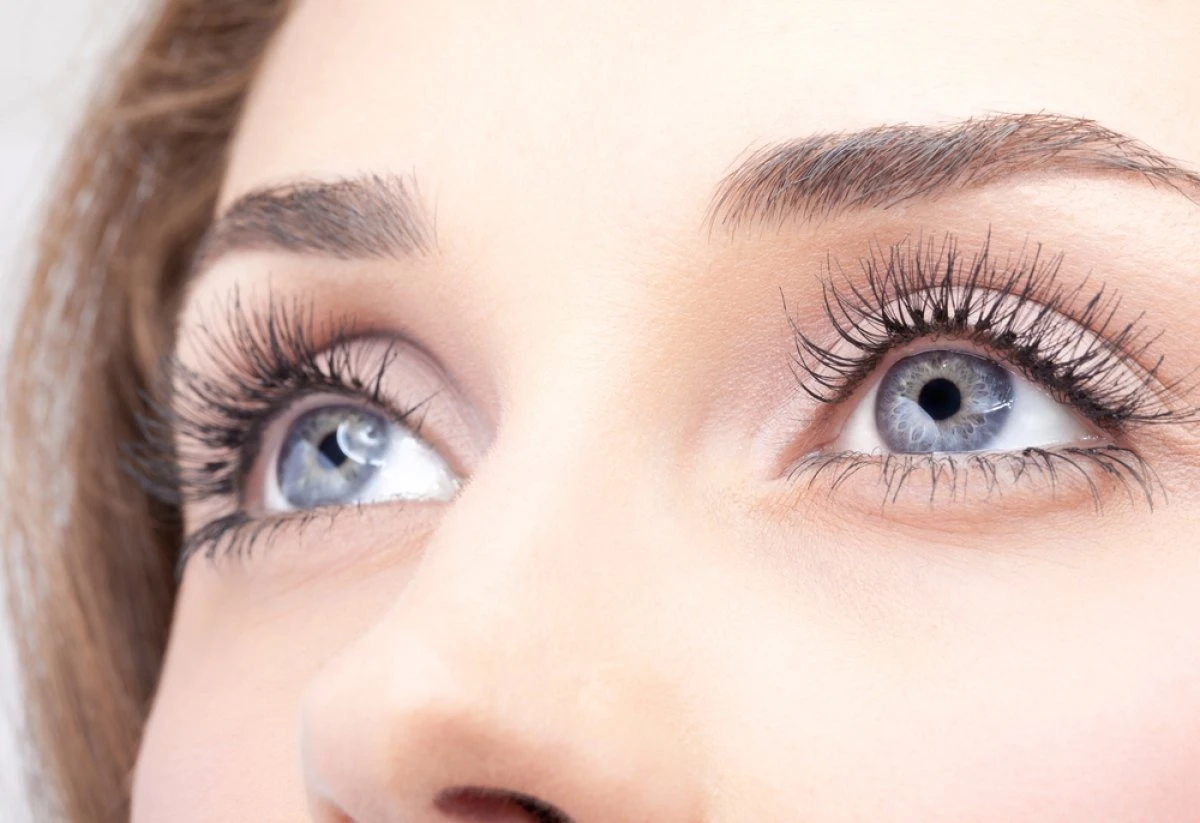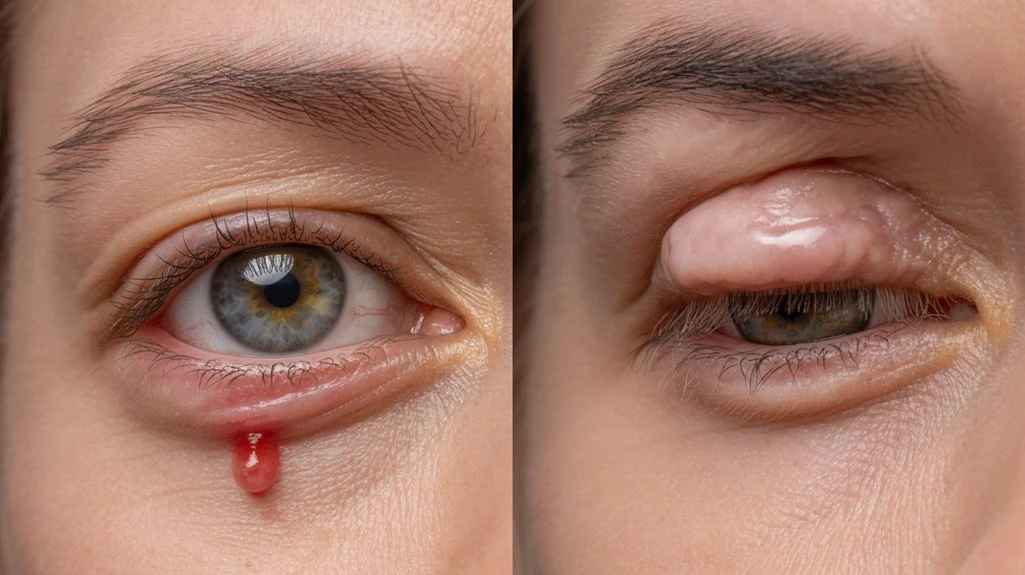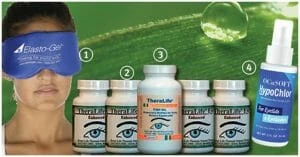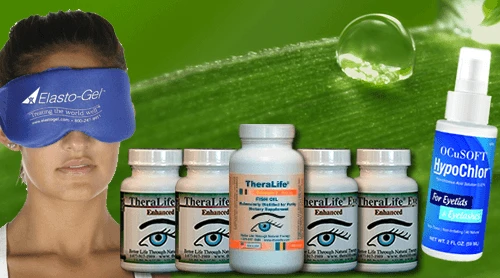You can distinguish a chalazion from a stye by their development and symptoms. A chalazion develops gradually, is usually painless, and arises from a chronic blockage of the meibomian gland, with minimal redness. In contrast, a stye is a painful, acutely inflamed bump caused by a bacterial infection of eyelid glands, often characterized by marked redness and tenderness. Accurate identification supports targeted therapy, and understanding their clinical progression will help you determine when to seek further evaluation.
Theralife offers unique oral eye treatment products that can benefit individuals experiencing chalazions, styes, and other eye conditions. As the only company providing oral eye care solutions, Theralife’s products are designed to address the root causes of eye issues, offering relief from discomfort and promoting eye health. Additionally, Theralife’s comprehensive range of eye care solutions is backed by extensive research and tailored to meet the specific needs of its customers. By using Theralife’s products, individuals can experience improved eye health and comfort, whether dealing with recurrent chalazions, blepharitis, or dry eye conditions.
Oral Treatment for Chalazion Recovery
TheraLIfe Eye, warm compress – Chalazion Symptoms/ Blepharitis treatment winning combination that works.
Add To Cart
Key Takeaways
- A chalazion is a painless, chronic blockage of the Meibomian gland, while a stye is a painful, acute bacterial infection.
- Styes present suddenly with redness and tenderness; chalazia develop gradually and are usually not red or sore.
- Styes are often contagious and linked to Staphylococcus aureus; chalazia are non-infectious and not contagious.
- Treatment for both starts with warm compresses, but styes may need antibiotics, whereas chalazia rarely do.
- Medical attention is needed if there’s no improvement after two weeks, worsening symptoms, or vision changes.
Causes and Risk Factors
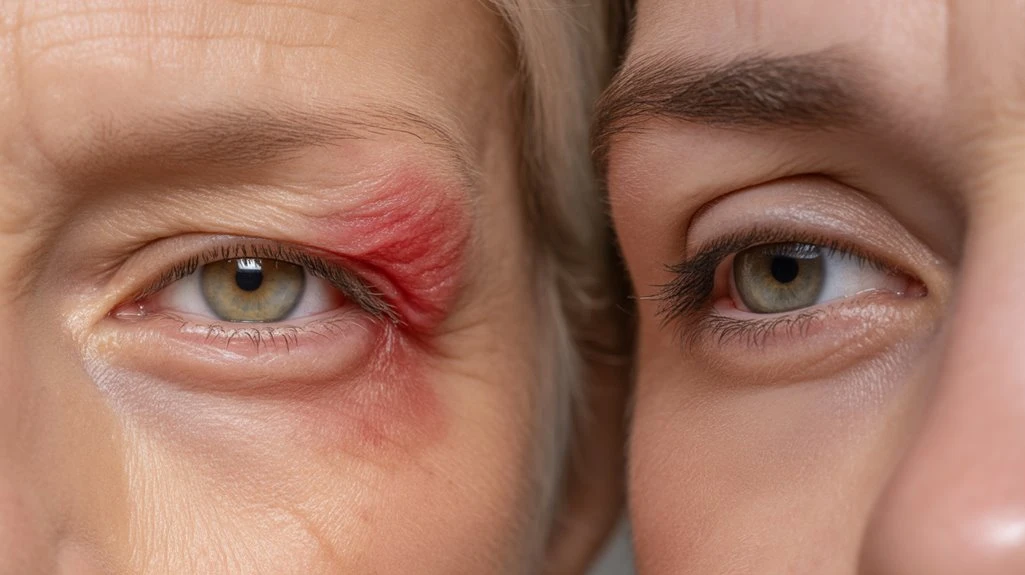
Understanding the causes and risk factors of chalazion and stye is essential for accurate diagnosis and management.
You should know that the primary causes of chalazion involve chronic blockage and sterile inflammation of the meibomian glands, often due to altered glandular secretion or underlying meibomian gland dysfunction.
In contrast, a stye typically results from acute bacterial infection, most frequently Staphylococcus aureus, affecting the eyelash follicle or associated glands.
When evaluating risk factors for stye, consider poor eyelid hygiene, chronic blepharitis, seborrheic dermatitis, or a history of previous styes.
Additional predisposing factors for both lesions may include rosacea, diabetes mellitus, and immunosuppression.
Recognizing these etiological distinctions and patient risk profiles will help you differentiate between chalazion and stye, guiding appropriate clinical intervention and targeted management.
A stye (hordeolum) is a painful, red bump on the eyelid, which can form inside or outside the eyelash line, and is commonly caused by Staphylococcus aureus bacteria.
Key Symptoms to Identify
Accurate symptom recognition differentiates chalazion from stye during clinical evaluation. You’ll notice that chalazia and styes present distinct clinical features, making diagnosis clearer with structured symptom comparison. Chalazia typically manifest as painless, slowly enlarging nodules on the eyelid, while styes often appear acutely with pain and localized erythema. For rapid, evidence-based identification tips, focus on onset, tenderness, and the presence of discharge. Unlike chalazia, styes can be contagious, stemming from bacterial infections of eyelash follicles. The table below highlights core distinctions:
| Feature | Chalazion |
|---|---|
| Pain | Usually painless |
| Onset | Gradual |
| Erythema/Redness | Mild or absent |
| Feature | Stye |
| Pain | Painful |
| Onset | Sudden |
| Erythema/Redness | Marked redness |
Utilize these diagnostic cues to enhance clinical evaluation and ascertain accurate symptom identification.
How Each Condition Develops
While both chalazion and stye affect the eyelid, their pathogenesis differs markedly and guides clinical management.
A chalazion develops through a chronic, non-infectious development process characterized by gland blockage—specifically, obstruction of the Meibomian gland. This leads to the accumulation of sebaceous secretions, inciting a granulomatous inflammatory response within the tarsal plate. You’ll typically note a slow progression without acute pain or erythema.
Conversely, a stye (hordeolum) arises from acute infection, most often involving the Staphylococcus aureus bacterium. The development process begins when bacteria invade the glands of Zeis or Moll (external stye) or Meibomian gland (internal stye), resulting in a gland blockage followed by rapid-onset, localized pain, erythema, and edema.
Additionally, blocked glands and thick oil secretion are indicative of posterior blepharitis, which can also impact the eyelid similarly to a chalazion or stye. Understanding these mechanisms is critical for accurate diagnosis and management decisions.
Treatment Options Compared
For both conditions, you should begin with home remedies such as applying warm compresses to the affected eyelid for 10–15 minutes several times daily. This facilitates drainage and reduces inflammation. For styes, adjunctive lid hygiene and topical antibiotic ointments may be recommended if secondary bacterial infection is suspected. Chalazia, on the other hand, rarely require antibiotics, as they’re typically noninfectious and respond mainly to conservative measures. If a lesion persists despite these interventions, you may need medical interventions. For chalazion, intralesional corticosteroid injections or surgical incision and curettage are evidence-based next steps. Persistent or complicated styes may also warrant incision and drainage. Accurate diagnosis guides your choice of therapy, ensuring targeted and effective treatment for ideal resolution. It is important to note that regular eyelid hygiene plays a crucial role in preventing the recurrence of chalazia, as it helps maintain healthy meibomian gland function.
When to Seek Medical Attention
If your eyelid lump fails to improve after one to two weeks of consistent warm compresses and hygiene, or if you notice worsening redness, pain, significant swelling, or visual changes, you should seek prompt medical evaluation.
It’s essential to recognize the symptoms timeline: most styes and chalazia resolve with conservative measures within a week or two.
When to consult an ophthalmologist includes persistence beyond this window, recurrent lesions, or signs of infection such as purulent discharge or systemic symptoms like fever.
Rapidly enlarging masses, distortion of the eyelid, or impairment of vision may indicate an alternative diagnosis, including malignancy, and warrant urgent assessment.
Don’t delay intervention if symptoms escalate or fail to follow the expected resolution course, as timely diagnosis improves outcomes.
Surgical intervention may be necessary for persistent chalazion cases, and the recurrence rate after surgery is approximately 69%, often in the same location.
Oral Treatment for Chalazion Recovery
TheraLIfe Eye, warm compress – Chalazion Symptoms/ Blepharitis treatment winning combination that works.
Add To Cart
Frequently Asked Questions
Can Makeup or Contact Lenses Cause Chalazion or Stye?
You increase your risk of developing a chalazion or stye if you neglect makeup hygiene or proper lens care.
Evidence shows that using contaminated cosmetics or not removing eye makeup thoroughly can obstruct meibomian glands, fostering bacterial growth.
Likewise, improper contact lens hygiene introduces pathogens, raising infection risk.
Clinically, maintaining strict makeup hygiene and lens care reduces the incidence of eyelid lesions such as chalazia and styes, supporting ocular health and minimizing diagnostic complications.
Are Chalazia or Styes Contagious to Others?
Did you know up to 5% of people develop eyelid lumps yearly?
When you compare symptoms, you’ll notice styes often present with pain and redness, while chalazia are typically painless.
Neither condition is contagious, so you won’t spread them to others through casual contact.
Treatment options differ: styes may require antibiotics if infected, while chalazia respond well to warm compresses.
Accurate diagnosis relies on recognizing these clinical differences and understanding transmission risks.
Can Children and Adults Get These Conditions Equally?
You should know age factors don’t considerably limit the occurrence of these conditions—both children and adults can develop them.
However, symptom differences may become apparent: children often present with more acute inflammation and discomfort, while adults might experience chronic or recurrent lesions.
Clinically, you’ll need to assess for tenderness, erythema, and duration of the eyelid swelling to guide diagnosis and management, regardless of the patient’s age.
Early intervention helps minimize complications.
Will a Warm Compress Help Both Conditions?
Imagine you wake up with a swollen eyelid, unsure if it’s an internal hordeolum or a chalazion.
You’ll find that applying a warm compress is an effective first-line treatment method for both. Clinical evidence supports warm compress effectiveness in promoting drainage, reducing inflammation, and expediting resolution of eyelid lesions.
Do Diet or Allergies Play a Role in Developing Either?
You should consider dietary factors and allergy triggers as potential contributors to eyelid inflammation.
While direct evidence connecting specific foods or allergies to chalazion or stye formation is limited, poor nutrition and chronic allergic conjunctivitis may disrupt normal meibomian gland function, increasing your risk.
If you experience recurrent lesions, assess your diet for high glycemic foods and identify environmental allergens.
Your ophthalmologist can provide diagnostic guidance and recommend targeted management strategies.
Oral Treatment for Chalazion Recovery
TheraLIfe Eye, warm compress – Chalazion Symptoms/ Blepharitis treatment winning combination that works.
Add To Cart
Conclusion
TheraLife offers innovative oral treatments for eye conditions, setting itself apart as the only company providing this unique form of eye care. Their products are specifically designed to address various eye issues, such as blepharitis, dry eyes, chalazion, and more, through a natural and holistic approach. For those dealing with chalazia and styes, understanding the distinction is crucial for effective management. Chalazia occur due to blocked meibomian glands without acute infection, while styes are infectious and often painful. TheraLife’s oral treatments target these underlying causes, providing relief and preventing complications. If you experience persistent eyelid swelling or pain, TheraLife’s products offer a promising solution, ensuring accurate diagnosis and effective management.
References
- 1.
- Jin KW, Shin YJ, Hyon JY. Effects of chalazia on corneal astigmatism : Large-sized chalazia in middle upper eyelids compress the cornea and induce the corneal astigmatism. BMC Ophthalmol. 2017 Mar 31;17(1):36. [PMC free article] [PubMed]
- 2.
- Fukuoka S, Arita R, Shirakawa R, Morishige N. Changes in meibomian gland morphology and ocular higher-order aberrations in eyes with chalazion. Clin Ophthalmol. 2017;11:1031-1038. [PMC free article] [PubMed]
- 3.
- Mittal R, Tripathy D, Sharma S, Balne PK. Tuberculosis of eyelid presenting as a chalazion. Ophthalmology. 2013 May;120(5):1103.e1-4. [PubMed]
- 4.
- Hanafi Y, Oubaaz A. [Leishmaniasis of the eyelid masquerading as a chalazion: Case report]. J Fr Ophtalmol. 2018 Jan;41(1):e31-e33. [PubMed]
- 5.
- Wu AY, Gervasio KA, Gergoudis KN, Wei C, Oestreicher JH, Harvey JT. Conservative therapy for chalazia: is it really effective? Acta Ophthalmol. 2018 Jun;96(4):e503-e509. [PMC free article] [PubMed]
- 6.
- Chang M, Park J, Kyung SE. Extratarsal presentation of chalazion. Int Ophthalmol. 2017 Dec;37(6):1365-1367. [PubMed]
- 7.
- Carlisle RT, Digiovanni J. Differential Diagnosis of the Swollen Red Eyelid. Am Fam Physician. 2015 Jul 15;92(2):106-12. [PubMed]
- 8.
- Ozer PA, Gurkan A, Kurtul BE, Kabatas EU, Beken S. Comparative Clinical Outcomes of Pediatric Patients Presenting With Eyelid Nodules of Idiopathic Facial Aseptic Granuloma, Hordeola, and Chalazia. J Pediatr Ophthalmol Strabismus. 2016 Jul 01;53(4):206-11. [PubMed]
- 9.
- Aycinena AR, Achiron A, Paul M, Burgansky-Eliash Z. Incision and Curettage Versus Steroid Injection for the Treatment of Chalazia: A Meta-Analysis. Ophthalmic Plast Reconstr Surg. 2016 May-Jun;32(3):220-4. [PubMed]
- 10.
- Park YM, Lee JS. The effects of chalazion excision on corneal surface aberrations. Cont Lens Anterior Eye. 2014 Oct;37(5):342-5. [PubMed]
- 11.
- 12.
- Görsch I, Loth C, Haritoglou C. [Chalazion – diagnosis and therapy]. MMW Fortschr Med. 2016 Jun 23;158(12):52-5. [PubMed]

